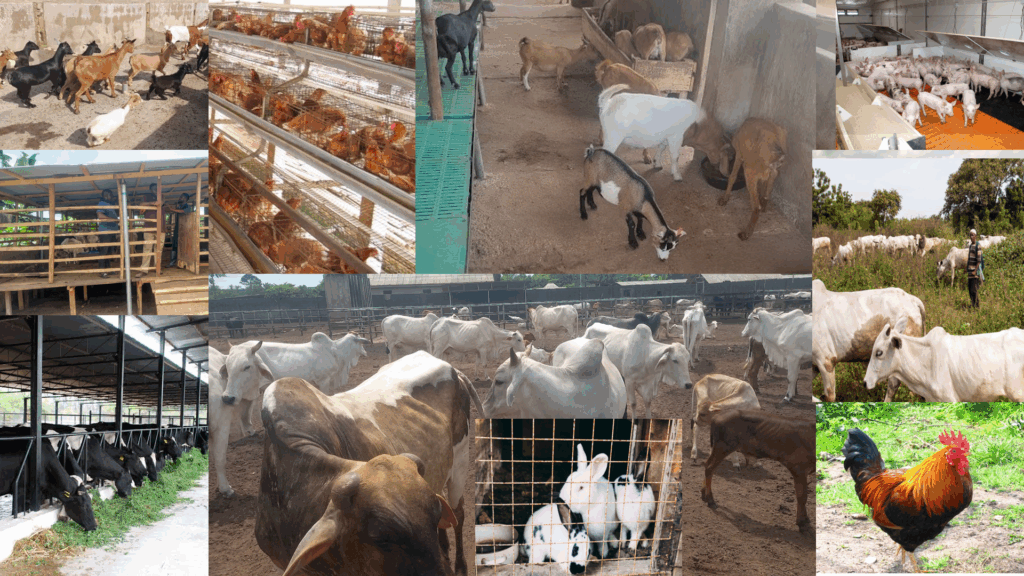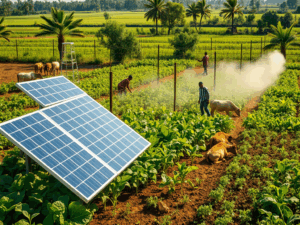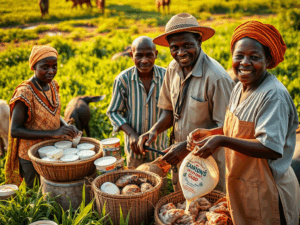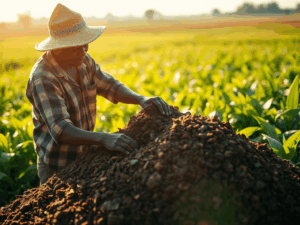
Keywords: Free-range systems, Confined livestock systems, Zero grazing, Livestock productivity.
The choice between free-range and confined livestock systems is a critical decision for farmers that influences productivity, animal welfare, social and environmental impacts. This article provides a comprehensive analysis of both systems, offering valuable insights for farmers in Nigeria and across Africa. By understanding the advantages and challenges of each approach, you can make informed decisions to optimize your agribusiness.
Understanding Free-Range Livestock Systems
Free-range livestock systems allow animals to roam freely outdoors, providing them with a natural environment to graze and forage. This system is often seen as more humane and environmentally friendly.
Benefits of Free-Range Systems
- Improved Animal Welfare: Free-range systems provide animals with space to move, reducing stress and promoting natural behaviors.
- Enhanced Nutrition: Animals have access to diverse foraging options, leading to a more balanced diet.
- Environmental Sustainability: Free-range systems often utilize rotational grazing, which can improve soil health and reduce the need for synthetic fertilizers.
Example: In Nigeria, smallholder farmers in the Northern region practice free-range poultry farming, allowing chickens to forage for insects and plants. This approach has led to healthier birds and improved egg quality, which are in high demand in local markets.
Challenges of Free-Range Systems
- Predation and Disease: Animals are more exposed to predators and diseases in a free-range setting.
- Land Requirements: Free-range farming requires more land, which may not be feasible for all farmers.
- Variable Productivity: Environmental factors such as weather and forage availability can impact productivity.
Exploring Confined Livestock Systems
Confined livestock systems, also known as intensive or industrial farming, keep animals in controlled environments such as barns or cages. This system focuses on maximizing productivity and efficiency.
Benefits of Confined Systems
- Higher Productivity: Controlled environments allow for precise management of feeding, breeding, and health care, leading to higher productivity.
- Disease Control: Confinement reduces exposure to predators and environmental diseases, making it easier to implement biosecurity measures.
- Efficient Land Use: Confined systems require less land compared to free-range systems, making them suitable for areas with limited space.
Example: In South Africa, commercial pig farms often use confined systems to manage large herds. By optimizing feed and health care, these farms achieve high growth rates and consistent meat quality, meeting the demands of urban markets.
Challenges of Confined Systems
- High Initial Investment: Establishing confined systems involves substantial capital investment in infrastructure and technology.
- Environmental Impact: Intensive farming requires substantial inputs like feed and water therefore generates significantly more wastes thereby contributing to environmental pollution.
- Animal Welfare Concerns: Confined spaces can lead to stress and behavioral issues among animals.
Zero Grazing Intensive Production
Zero grazing, a form of intensive livestock production, involves confining animals such as cattle, sheep, and goats in a controlled environment where they are fed and managed. This system offers several benefits over open grazing.
Benefits of Zero Grazing
- Optimized Nutrition: Animals receive a balanced diet formulated to meet their specific nutritional needs, resulting in improved growth rates and productivity.
- Enhanced Disease Management: The controlled environment reduces the risk of diseases and parasites, leading to healthier livestock.
- Efficient Land Use: Zero grazing requires less land compared to open grazing, making it suitable for farmers with limited space.
- Environmental Protection: By preventing overgrazing, zero grazing helps maintain soil health and reduce land degradation.
Example: In Kenya, dairy farmers have adopted zero grazing for cattle, leading to higher milk yields and better management of feed resources. The success of zero grazing has encouraged many small-scale farmers to adopt this system to increase their profitability.
Comparative Analysis
Cattle Production
Free-Range: Cattle roam freely, leading to natural grazing patterns but also exposing them to predators and diseases. This has also created the major challenge of incessant clashes between the herders and the crop farmers, with the attendant loss of human lives and properties in countries like Nigeria, Ghana and sometimes in Kenya
Zero Grazing: Cattle are kept in a controlled environment, optimizing feed intake and improving milk production and weight gain.
In Nigeria, the introduction of zero grazing for dairy cattle in Kaduna State has resulted in a significant increase in milk production, benefiting local dairy farmers and the community.
Sheep Production
Free-Range: Sheep graze on pastures, which can lead to uneven nutrition and higher vulnerability to predators.
Zero Grazing: Sheep are fed a balanced diet, leading to consistent growth and higher wool and meat quality.
In Ethiopia, zero grazing has been implemented for sheep farming, improving wool quality and increasing meat production, which is crucial for local markets and export.
Goat Production
Free-Range: Goats forage on varied vegetation, which can be beneficial but also risky due to potential exposure to toxins and diseases.
Zero Grazing: Goats are provided with a controlled diet, enhancing growth rates and milk yield while reducing the risk of disease.
In Ghana, zero grazing for goats has improved meat and milk production, providing farmers with a reliable source of income and improving food security.
Conclusion
The choice between free-range and confined livestock systems, including zero grazing, depends on various factors such as available resources, market demands, and environmental conditions. By understanding the strengths and weaknesses of each system, farmers in Nigeria and across Africa can make informed decisions to enhance their agribusiness operations. Stay updated with the latest trends and innovations in livestock farming by subscribing to our newsletter. Access exclusive content and valuable resources to help you stay ahead in the competitive world of agribusiness.
By providing a balanced view of free-range and confined livestock systems, this article aims to equip African farmers with the knowledge to choose the best practices for their unique circumstances.




